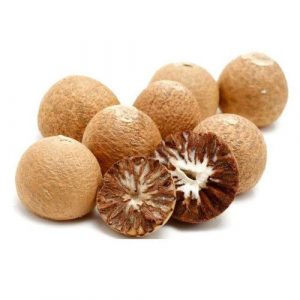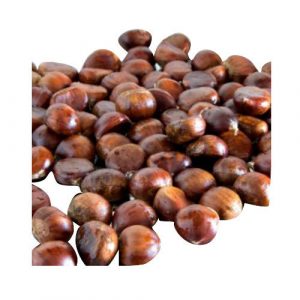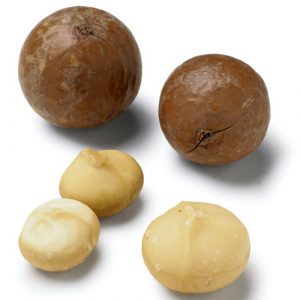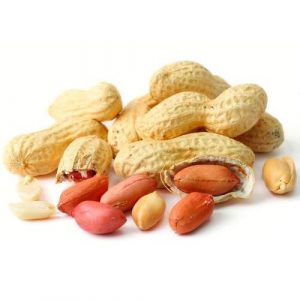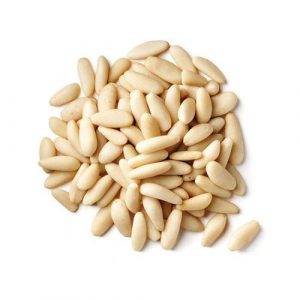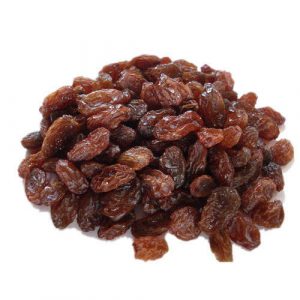-
Almond Nuts
Almond Nut
The almond is the edible kernel of the fruit of the sweet almond tree. It is a bright white fruti and wrapped in a reddish brown cover.
It is consumed as dry fruit, fried and/or salted. Some well-known products, such as nougat and marzipan, are made of almonds.
-
Betel Nuts
Betel nut
Betel nut is the nut that comes from a plant called Areca. It is sometimes used to make medicine. Betel nut is chewed alone or in the form of quids, a mixture of tobacco, powdered or sliced betel nut, and other ingredients.
-
Cashew Nuts
Cashew Nuts
Our raw cashews are ready to supercharge your day as a standalone snack! Cashews have a mild nutty taste that is delicious all on its own, or atop salads and Asian-inspired rice dishes and curries. Blend cashews with a zip of pressed oil to create a homemade raw cashew butter.
Raw cashews are a satisfying and nutritious snack. These nuts are high in protein, fiber and healthy fats. We love adding these tasty raw cashews to rice dishes and curries for an extra bite of protein and flavor. They are unsalted, huge and delicious for snacking or cooking. -
Chest Nuts
Chestnut
Chestnut (Castanea spp.) is a deciduous tree in the family Fagaceae grown for its edible seeds (nuts). The chestnut tree has a thick trunk covered in gray bark. The trunk has an erect growth habit and can grow 2 m (6.6 ft) in diameter. When the tree stands alone, the canopy can spread 15 m (49 ft) across and is made up of glossy leaves with serrated margins and pointed tips. The leaves are hairy with visible glands on the underside. The chestnut tree produces flowers on long catkins and the seeds are produced in clusters of 1–3. The seeds are covered by a thick, spiny bur which is approximately 10 cm (4 in) in diameter. The kernel within is protected by a thin, dark brown shell. Chestnut trees can reach 40–60 m (131–198 ft) in height and can live for in excess of 150 years. Chestnut may also be referred to by variety and includes European, American, Japanese and Spanish chestnut. The tree originates from Asia.
-
Chickpeas
Chickpeas
Chickpeas mashed to a paste with lemon juice, olive oil, and sesame paste—is widely eaten as a sauce and dip for bread. Mashed cooked chickpeas are formed into small flat cakes or balls and fried for falafel, a popular Middle Eastern dish. In southern Europe and Latin America, chickpeas are a common ingredient in soups, salads, and stews. A kind of meal or flour is also made from chickpeas and can be used to make a flatbread known as socca or mixed with wheat or other flours for baking.
-
Hazel nut
Hazelnut
Hazelnut, belongs to the family Corylus, which includes C. avellana (Common or European hazelnut) and the closely related species C. maxima (filbert). Hazels are deciduous trees or shrubs in the family Betulaceae grown for their edible nuts. Hazelnuts are large multi-stemmed shrubs or small trees with rounded leaves which possess a doubly serrated margin (each tooth bears another tooth). They produces flowers very late in the winter prior to the emergence of any leaves. The female flowers are small and only the bright red stigmas are visible protruding from the bud. The male flower is a catkin which is pale yellow in color and measures 6–12 cn (2–5 in) in length. The fruit of the hazelnut is a classic nut which grows in clusters of 1–5, each protected by a leafy husk which covers most (common) or all of the nut (filbert). The nut is oval in shape and yellow to brown in colour. Each has a pale scale at its base. When ripe, the nut falls from the husk to the ground. Hazenut can reach a height of 3–8 m (10–26 ft) and can live for many years, although its commercial lifespan is usually about 40 years. Hazelnut originates from Europe and South East Asia.
-
Macadamia
Macadamia Nuts
Macadamia grow on Macadamia trees which belong to the genus Macadamia which contains four species of tree or shrub in the family Proteaceae which are grown for their edible seeds (nuts). Cultivated macadamia is a derivative of the subtropical species’ Macadamia integrifoia and Macadamia tetraphylla and their hybrids. Macadamia plants naturally have multiple stems but are trained to a central leader system (single stem) in plantations. The leaves of the trees are oval or oblong and are arranged in whorls of 3 or 4 depending on variety. The tree produces creamy white or pink-red flowers on racemes of 100–300 flowers and a rounded fleshy fruit up to 27 mm (1 in) in diameter. The flesh covers a single spherical or elliptical seed (nut) with a white or gray kernel depending on the variety of tree. Macadamia can reach a height of 20 m (65.6 ft) and have a commercial lifespan of 40–60 years. Macadamia may also be referred to as Queensland nut or Australian nut and originates from Australia.
-
Peanut Groundnut
Peanut Groundnut
These are one of the largest varieties of peanuts available. In shell jumbo raw peanuts are ideal for those who like to eat them unroasted. You can also cook them to your own taste. Our peanuts are a healthy treat that is high in protein, fiber, and heart-healthy nutrients.
-
Pecan Nuts
Pecan Nuts
Pecan nuts are mainly used as appetizers and additions to salads, cakes, candies, and cookies or as emergency rations for persons expending great amounts of energy, rather than a basic diet.
Pecan kernels are nutritious and a good source of energy and vitamins. Defatted kernel powder is useful as a dietary supplement as it contains all the essential amino acids and significant amounts of minerals and natural antioxidants like phenolic acids and tocopherols. The oil is used in cooking and salads and has good keeping qualities. Pecan kernels are a good source of energy and provide about 2891 kJ 100 g−1. -
Pistachios
Pistachios
Pistachio, Pistacia vera, is a deciduous tree in the family Anacardiaceae grown for its edible seeds (nuts). Pistachio is a small to medium sized tree with a branching main stem (trunk) and a spreading growth habit. The leaves of the pistachio are pinnate and composed of five individual oval leaflets. Male and female inflorescences are produced on different trees (dioeceous).The flowers are small, brownish-green in color and lack petals. They are produced on panicles, each possessing several hundred flowers. The fruit of the tree is a drupe with an oblong kernel covered with a thin, bony shell. The shell splits along its long axes when mature. Pistachio trees can reach up to 20 ft (65.6 ft) in the wild but are generally smaller under cultivation.
The pistachio nut is a dry fruit of small size, lengthy, with a hard, thin and clear brown shell. The edible part is yellowish green and tender.
They are used in foodstuff products and also in cosmetics, for which there is a great demand.
-
Raisins
Raisins
Raisins are processed by sun drying and tray drying several different types of grapes. They are small and sweetly flavored with a wrinkled texture. Indian Raisins are available in different size and colors. They have a flavor similar to the grapes from which they are made, but the drying process which creates them concentrates the amount of sugar making them taste much sweeter.


